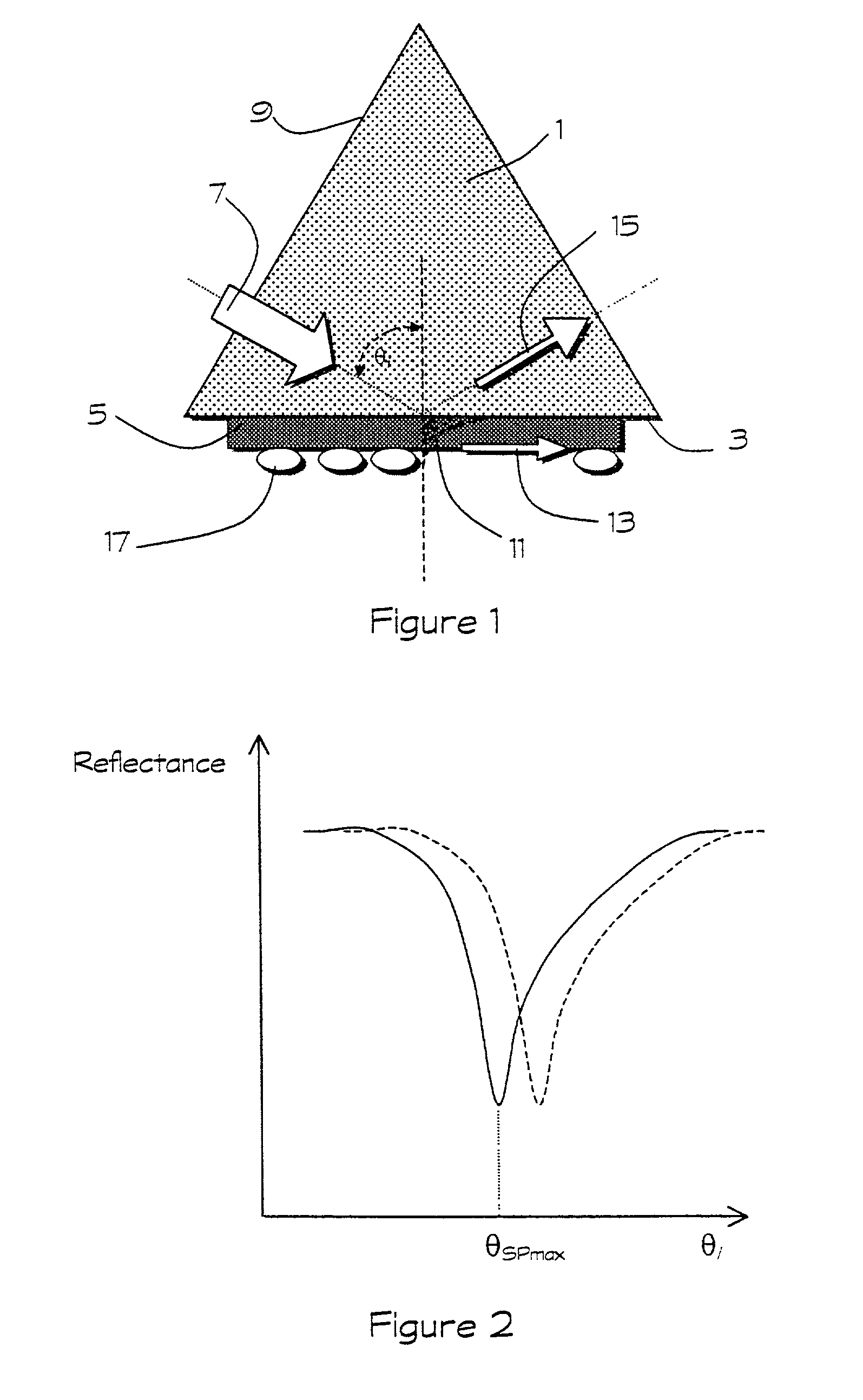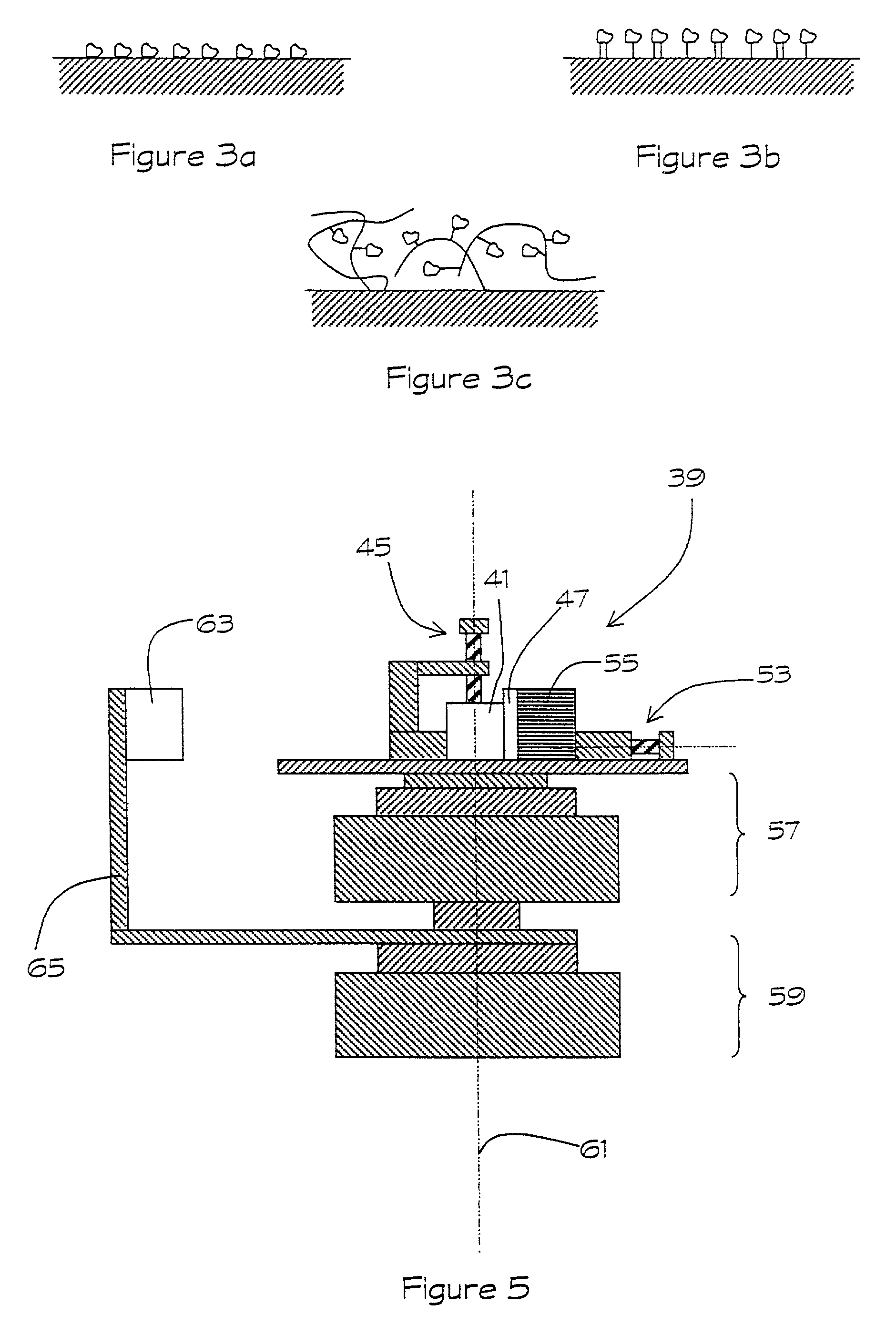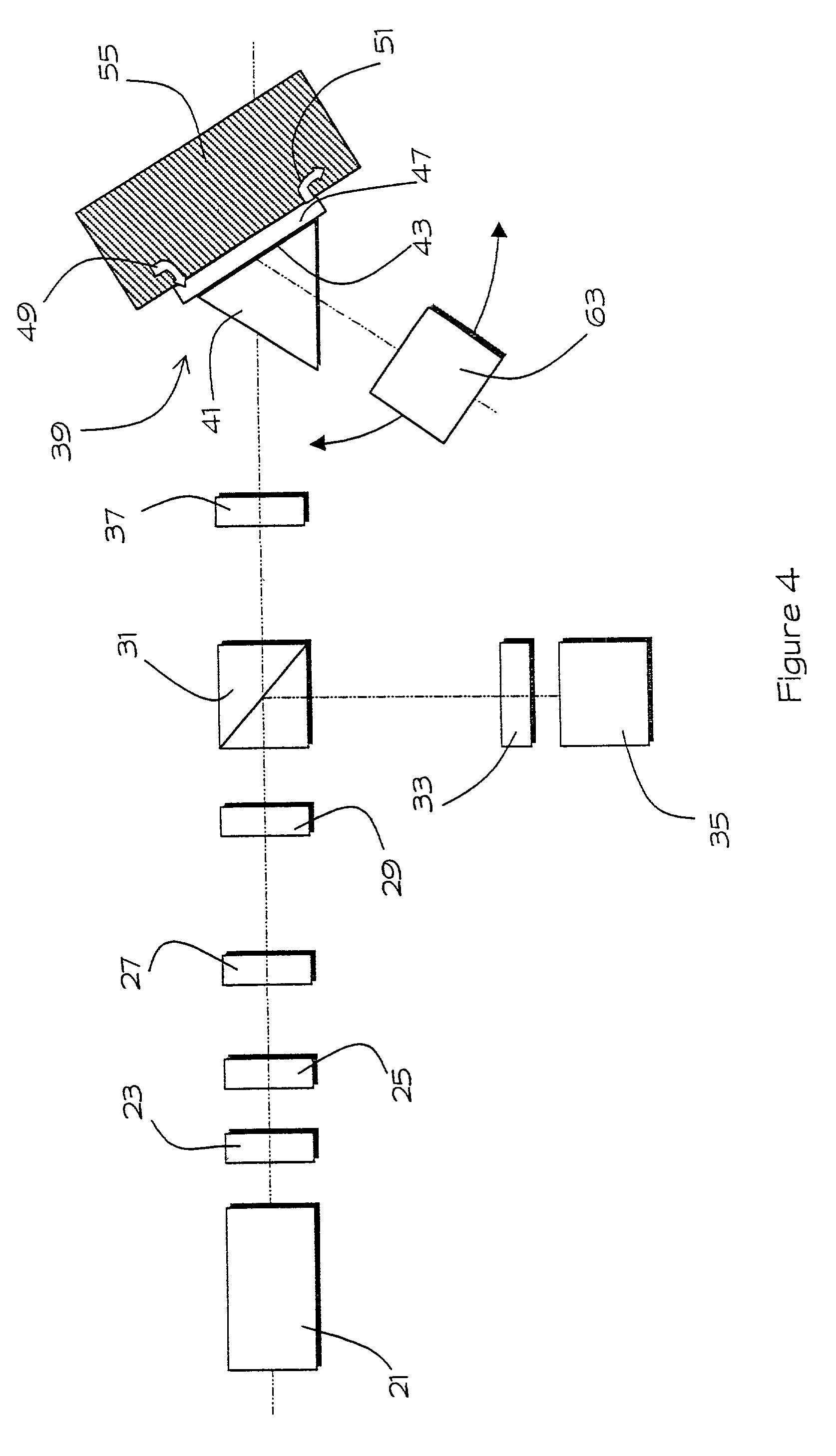[0029] As previously noted, the production and use of high purity water are part of many industries, with medical, pharmaceutical and electronics industries being of major importance. There is a need to measure organic contaminants such as pyrogens, including lipopolysaccharides and other endotoxins, in high purity water, both continuously and in discrete samples.
Current analysis methods do not allow simple
continuous measurement of
contamination. The concept of direct affinity sensors offers a solution to this problem but as described previously the practical reality is that the non-specific interactions of sample components within real samples would be expected to exclude their use to detect low concentrations of contaminants. High purity water can be viewed as an unusual real sample as it contains few other components apart from the
impurity or impurities that are required to be measured. A previously overlooked consequence of this observation is that a direct affinity sensor should be applicable to the measurement of low concentrations of contaminants in high purity water as lack of other sample components eliminates the non-specific
interaction problem.
[0065] An affinity
coating needs to be immobilised or attached within the sensing range of the
transducer utilised, generally directly or indirectly on the surface of the
transducer, so that sample can be presented to the sensor without the affinity
coating being removed from the locality of the
transducer. The simplest option is to attach an appropriate affinity component by simple physical adsorption from a suitable
solvent, with the result illustrated in FIG. 3a. Commonly this would be a
protein-based affinity
system physically adsorbed, for example from an
aqueous solution. Other preferred options include
chemisorption and the covalent attachment of the affinity systems to the surface of a transducer (FIG. 3b) that usually results in an increased stability compared to physical adsorption. For example, a silver SPR surface can be activated via an organofunctional
silane or an organofunctional
alkane thiol that introduces organic groups to the surface such as amine, carboxyl or glycidoxyl groups that can be use to covalently attach affinity
system such as proteins via
linker chemistries such as
carbodiimide chemistries. The use of
polymer modified transducer surfaces, as illustrated in FIG. 3c, is also a preferred option; for example, this option may involve the covalent immobilisation of a
polymer such as carboxymethyl
dextran to an activated transducer surface thereby enabling the subsequent covalent immobilisation of an affinity
system to the carboxyl groups of the carboxymethyl
dextran. This approach can produce a thin, three dimensional film on the surface increasing the amount of affinity system present per unit are of the transducer thereby increasing the sensitivity of the final sensor.
[0066] In summary, an appropriate immobilisation method is used that enables a suitable amount of affinity system to be stably maintained within close proximity to the transducer surface and that preferably maximises that amount of the immobilised affinity system that is functionally active.
[0073] As the sample passes over the sensor surface with the immobilised affinity
coating, the
analyte, e.g. endotoxin, will bind to the surface at a
rate dependent on the concentration of the
analyte present in the sample. If the affinity of the interaction is high, the sensor
signal will increase as further
analyte binds, i.e. little bound analyte will dissociate from the sensor if the concentration in the sample is reduced. Therefore at a given instance, the rate of change of the sensor output will be a function of the concentration of the analyte and the magnitude of the
signal will be a function of the total amount of endotoxin that the sensor has been exposed to in its lifetime, i.e. the apparatus will function as a
dose meter. Such a sensor could be used as an alarm set to respond to either a pre-set instant level of analyte concentration or to a pre-set level of
dose of analyte; the alarm could call a
plant operator's attention to the event, and / or result automatically in some predetermined response, such as a change of
process conditions or causing sub-standard water to be wasted or recycled. The operational lifetime of such a sensor will be dependent on the concentration of the analyte present and would typically be set to the time taken for the affinity coating to reach a given fraction of its maximum capacity. At this point the sensing surface may be replaced with another sensor, e.g. a gold-coated
prism or slide with the affinity coating, and the removed sensor recycled or disposed. Alternatively, the affinity coating could be regenerated, for example, by stopping temporarily the sample flow and replacing the sample flow with a flow of a regeneration solution such as a low pH
buffer solution that would destabilise the analyte / affinity coating interaction allowing the analyte to diffuse away from the sensor surface. The sample flow would then be re-established. This approach would be especially advantageous if the operation lifetime of the sensor was short, due possibly to a
high concentration of analyte. In addition to a homogeneous sensing surface coated with a single affinity coating, implementations can be envisaged that contain a number of different affinity coatings in a single sensor. The coatings could be immobilised to discrete areas on the gold and the intensity of the reflected light measured from each area giving a number of SPR responses equivalent to the number of different areas / affinity coatings. For example, in the simplest case, mellitin could be immobilised to one area and the remaining area of the
gold film left unmodified so as to act as a reference
signal to correct for variation in background signals. Alternatively a number of different affinity coatings could be discretely immobilised enabling the differing selectivities of individual affinity systems to be pooled, hence reducing bias towards a given sub-set of endotoxin species.
[0075] The packaging of an off-
line sensor could be envisage in a bench-top format either with or without automated
sample handling or in a portable or hand-held meter for direct application of the sample in a probe or "dip-stick" fashion. The portable or hand-held meter formats would be expected to have a
single use, disposable sensor component thereby eliminating the requirement for regeneration of the affinity coating.
 Login to View More
Login to View More 


